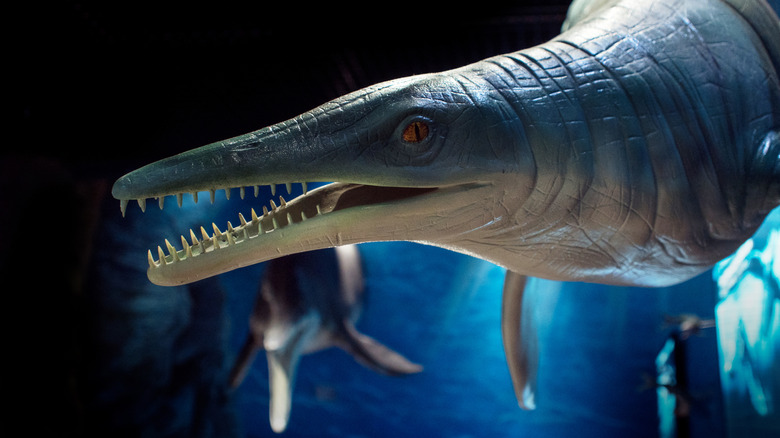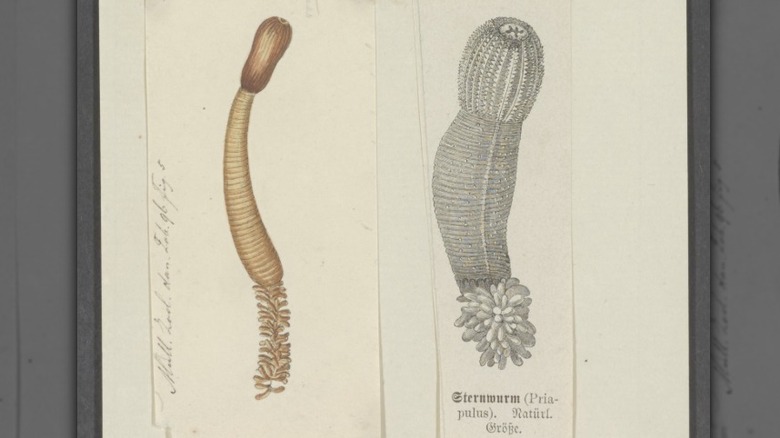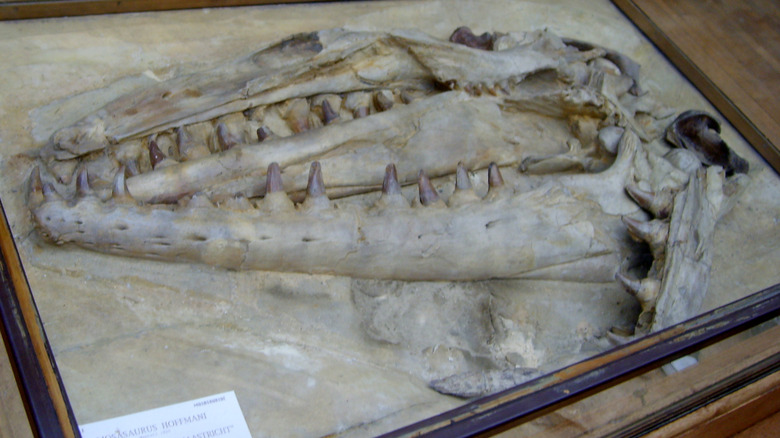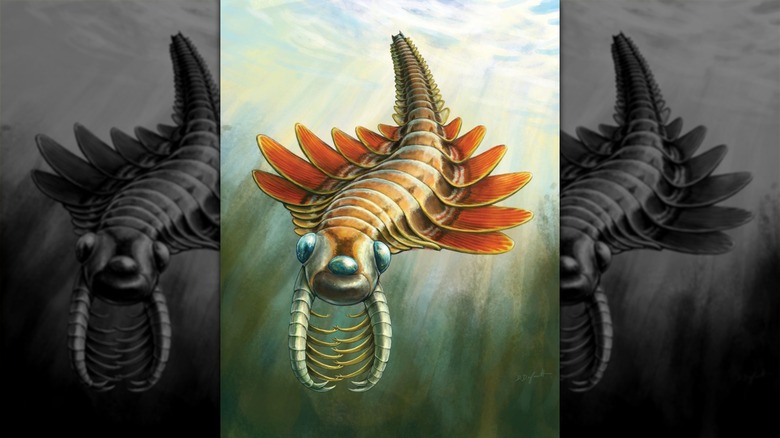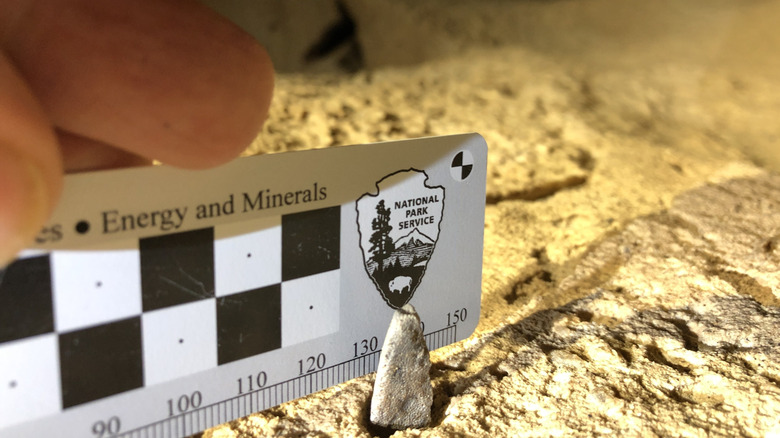Ancient Sea Creatures Humans Discovered In 2025
We've all heard the line that we know more about the surface of the moon than we do about Earth's oceans. But if it's real mystery and otherworldly intrigue you're after, consider diving deeper into Earth's ancient oceans, where three-eyed predators, throat-flipping worms with hairy teeth, and marine monsters that rivaled dinosaurs in size and power once roamed. This isn't a modern whale-watching cruise or swimming with the dolphins, it's a tour through ancient seas filled with alien-looking arthropods, reptilian leviathans, and creatures with anatomies so strange they earned nicknames like "penis worm" and "sea moth."
In 2025, researchers packed patience and pickaxes in an effort to learn more about the strange history of life. Some of the year's wildest discoveries turned up in famous spots, as many of America's favorite National Parks used to be underwater. Both Mammoth Cave National Park and the Grand Canyon hosted groundbreaking discoveries, while Canada's national parks also got in on the action, with new fossil finds in the well-preserved Burgess Shale formation in the Canadian Rockies. Of course, finds happen outside of the postcard parks, like a sea dinosaur found in a creek bed in the college town of Starkville, Mississippi.
So, let's sail off to see some of the sea creatures unearthed in 2025. No life jacket needed; if you met a mosasaur, it wouldn't help anyway.
The Grand Canyon's not-safe-for-work marine worm
The Grand Canyon wasn't always a dry maze of trails and cliffs with tourists snapping selfies on the rim. Over half a billion years ago, a warm, shallow sea covered the area that's now in Arizona. To our modern eyes, the underwater animals looked a bit like slugs, shrimp, and a few things you wouldn't want showing up on your salad.
Curious about what secrets the canyon might still be hiding, a team of researchers went digging into the layers of sedimentary rock. They found well-preserved fragments of crustaceans, soft-bodied little mollusks, and a bizarre group of creatures known as priapulids. You might know them by their less formal nickname, penis worms. (Yes, the resemblance is exactly what you think it is.) But just when you think things can't get much weirder, this marine worm hooks prey by flipping its mouth inside out to reveal a throat lined with bristle-like teeth. That delightful image earned it another nickname, the cactus worm. Whatever you call them, these wriggly wonders once called the Grand Canyon home.
Over a dozen species of priapulids still roam the waters today, and they're quite similar to their ancient ancestors. But in July 2025, researchers announced that they'd found something extra special in the canyon — a brand-new species of priapulid. They named it Kraytdraco spectatus, a nod to the krayt dragon from "Star Wars": both have weird teeth and look like they came from a galaxy far, far away.
Dinosaur of the sea found in Mississippi
In April 2025, geologists in Mississippi spotted an unusually large lumbar vertebra emerging from the creek bed. Its shape was unmistakable, and to a trained eye, it could only mean one thing: they'd found a mosasaur. These marine reptiles ruled the ancient seas during the Late Cretaceous period, at the same time Triceratops and Tyrannosaurus rex stomped around on land.
The Mississippi find turned out to be Mosasaurus hoffmannii, one of the most dangerous sea creatures to ever exist. These apex predators of the sea typically grew up to 50 feet long and weighed 20,000 pounds, longer and heavier than a T. rex. But with powerful flippers for arms and a tail like a torpedo, their large size didn't stop them from being fast and agile hunters. They could chase down prey with terrifying efficiency, attacking with teeth that would put the shark from "Jaws" to shame. Mosasaurus hoffmannii's jaws were armed with 60 inward-curving teeth, basically fish hooks that were perfect for snagging large prey. And, like many modern lizards, mosasaurs were indeterminate growers that just kept getting bigger and bigger with age.
Along with their dinosaur contemporaries, mosasaurs disappeared in the great extinction at the end of the Cretaceous period. The Mosasaurus hoffmannii piece found in 2025 now rests in peace at the Mississippi Museum of Natural Science.
The three-eyed sea moth in the Canadian Rockies
What has three eyes and uses wing-like flaps to swim? The answer isn't a joke; it's an ancient sea creature from the now-extinct group of arthropods known as radiodonts. Their 500 million-year-old fossils look like something out of a sci-fi novel, but they were once very real.
More than 60 fossil specimens of radiodonts were collected over several decades from the Burgess Shale Formation in the Canadian Rockies, a site famous for its well-preserved fossils. In the first half of 2025, researchers pieced together these historic findings with recent discoveries and realized they were looking at a brand-new species of radiodont, which they named Mosura fentoni.
At about the size of an adult index finger, Mosura fentoni holds the title of the smallest known radiodont, and its compact frame and wing-like swimming flaps earned it the nickname sea moth. But don't let the cute alias fool you — this was no gentle flutterer of the ocean. Mosura fentoni came armed with a circular, serrated mouth that looked like a blender in attack mode, plus claws sporting six curving spines, each forked at the tip. It was probably an agile hunter, using its middle eye to help stay oriented as it zipped through the water. Mosura fentoni also had a specialized "breathing tail," making it the first known radiodont with a separate body part just for respiration.
The small sharks of Mammoth Cave National Park
Mammoth Cave in Kentucky is one of the most incredible caves in the world. Its caverns aren't just tunnels of rock, but also hide underground rivers and lakes with eyeless fish swimming in the dark, and even sharks. About 340 million years ago, a warm and shallow sea covered what's now Mammoth Cave National Park, in which coral reefs swayed in the currents, crinoids looked like underwater flowers on the seafloor, and marine worms burrowed through the sand. And there, too, plenty of sharks lurked about.
Shark teeth and fin spines hide in the walls and ceilings of Mammoth Cave, and researchers have discovered fossil remains for dozens of shark species. In March 2025, they announced the discovery of a new species, Clavusodens mcginnisi, which was only 3 to 4 inches long, like a fun-sized shark. Pair that size with its chisel-like front teeth, and its nickname "chipmunk shark" makes perfect sense.
In July 2025, researchers introduced another new shark species, Macadens olsoni. Compared to the chipmunk shark, this one was a giant, but at less than a foot long, Macadens olsoni wasn't exactly the stuff of marine horror movies. Its striking feature was a tooth whorl, used to crush small mollusks and marine worms.
